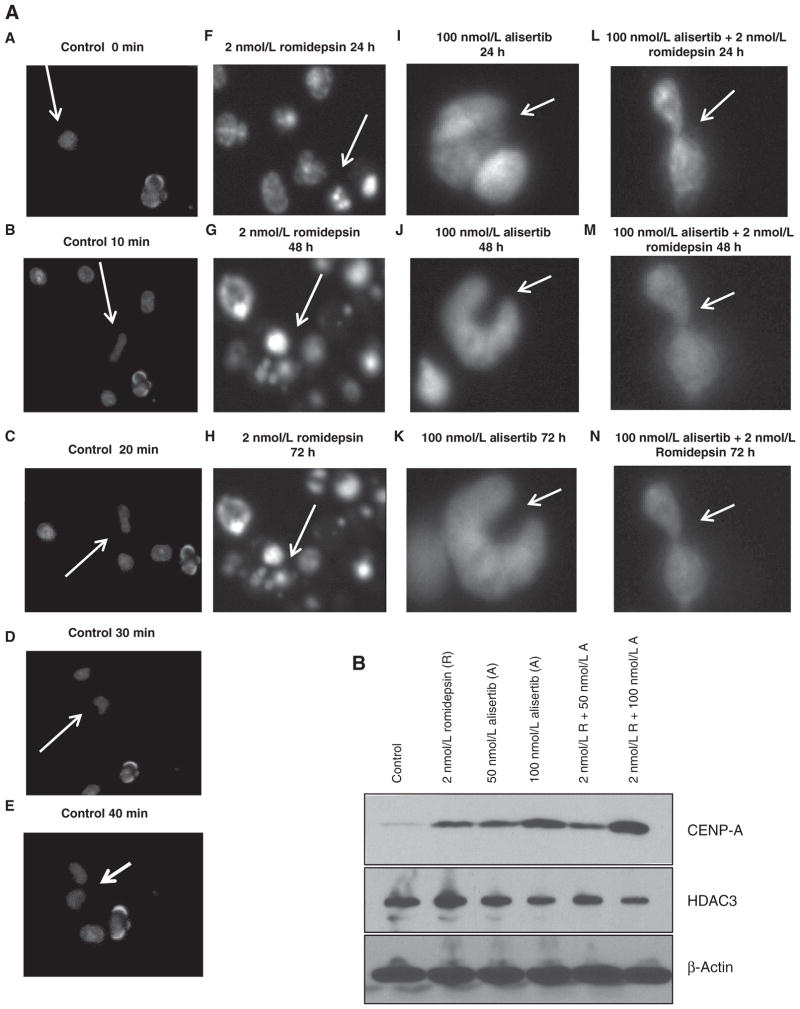Figure 4.
Combined treatment of alisertib and romidepsin induces cytokinesis failure. A, live-cell imaging was used following 24 hours of treatment with 2 nmol/L of romidepsin and 100 nmol/L of alisertib both as a single agent and in combination in the H9, TCL cell line. Cells were imaged from 0 to 72 hours. A to E, images from control H9 sample demonstrate an H9 cell going through the stages of mitosis (prophase, metaphase, anaphase, telophase, and cytokinesis). Each stage is depicted every 10 minutes, for a total of 40 minutes. F, following 24 hours of 2 nmol/L romidepsin treatement H9 cells begin to display apoptotic effects depicted by the fragmented cells. G and H, following 48 and 72 hours of romidepsin treatment (respectively), there was an increase in fragmented cells; however, no mitosis defect was observed. I, following 24 hours of 100 nmol/L alisertib treatment, H9 cells demonstrate a multinucleated form depicted by the arrow. J and K, following 48 and 72 hours of alisertib treatment (respectively), the cell was shown to be arrested, no longer entering mitosis. L, following 24 hours of combination treatment (100 nmol/L alisertib + 2 nmol/L romidepsin), the H9 cell demonstrated cytokinesis failure. M and N, cytokinesis failure was observed following 48 and 72 hours of treatment, respectively. B, evaluation of CENP-A protein levels following 72 hours of treatment with 2 nmol/L of romidepsin(R), 50 nmol/L of alisertib(A), 100 nmol/L of alisertib (A) as a single agent of in combination. Evaluation of HDAC3 protein levels following 72 hours of treatment with 2 nmol/L of romidepsin, 50 nmol/L of alisertib, 100 nmol/L of alisertib as a single agent of in combination.

